During my first night at Legacy Lodge in Winter, Wisconsin, an oracle appeared in my dreams. “You will catch one musky—and only one musky—sometime over the next three days, but the day and time will be a surprise.” Bonafide oracles are infallible, and mine resembled a famous one named Pythia. I wanted to give her the benefit of the doubt a genuine oracle deserves, but her proclamation seemed like a puzzle with a missing piece. So I remembered how an old Professor of Logic from my freshman year in college—Dr. Martin van Nostrand—taught me to untangle puzzles like this.
Knowing I would catch one and only one musky—and knowing that the day and time would surprise me—I immediately ruled out catching the preordained musky on the last cast of the last day. You see, if I hadn’t already caught the musky before that, then I’d know for sure it was coming on my last cast. But the oracle said I’d be surprised, so I deduced that the musky could not come on the last cast of the last day. Just like good old Doc van Nostrand taught me.
Knowing I wouldn’t catch the musky on my last cast, I used the same logic to deduce I wouldn’t land it on my next to last cast either. From there, I ruled out the cast before that, and, eventually, eliminated all the casts down to and including the first cast of the first day. Evidently, the oracle’s proclamation was a paradox. They like to mess with your mind that way. An oracle once told Socrates there was no man wiser than him, causing the founder of Western philosophy to conclude he was ignorant. An oracle also taught Lucy the football trick she used to aggravate Charlie Brown.
All this logic stuff happened at about three in the morning. I had a big fishing day coming up, so I closed my eyes and went back to sleep. In addition to paradoxes, oracles like to confuse you with short, concise statements called maxims. So as soon as I fell asleep, old Pythia returned and congratulated me for my fine work on her paradox. But just before she retreated through a giant doorway made of Capriko cheese, she trumpeted the three maxims of musky fishing: Know thy no-fly zone; everything to excess; and inattention brings ruin. She also said I’d discover a loosely-related maxim on my own, but only if I didn’t look for it. Just like Lucy with her football trick, oracles never get tired of this stuff.
I was at Legacy Lodge for Musky Madness, an annual event with the best hosts you’ll ever find at a fish camp: Bob and Lisa White. Like me, most of the anglers and guides came from the Midwest, but one was from Kentucky, another from Texas, and another from North Carolina. The guy from North Carolina was Mike Sepelak, a good friend of mine who’d be my roommate. Mike and I had roomed together a few times before, and he always seems to tolerate my quirks. I once asked if my frequent trips to the bathroom bothered him, and he said he welcomes the break from my snoring.
Know Thy No-Fly Zone
My guide on the first day of musky fishing was Gabe Schubert, a musky guide of biblical significance who—nevertheless—prefers to avoid that distinction. Razor-sharp fangs and 5/0 hooks have scarred his skin, and I believe musky blood has mixed with his through at least one of those wounds. This blood bond is likely why stellar musky guides like Gabe understand these fish in ways most of us can’t.
My fishing partner for the day was Steve Ramirez, and, after a friendly greeting, Gabe taught us the unbreakable rule of musky fishing from a boat. The airspace immediately above and around the guide’s head is the no-fly zone. Under no circumstance can a musky fly enter that space in flight. The hooks on those flies are like ten-penny nails with laser sharpened points. A size 14 fly impaling your cheek is annoying; a 5/0 hook skewering your spinal column is life threatening. The no-fly zone is a commandment, not a suggestion.
The musky flies in Gabe’s box were all big enough to be legal brook trout in Michigan, and some would be trophies. He selected one with peach-toned hair and feathers, then snapped it to the steel tippet at the end of my line. Next, he showed us a method to cast this fly, which I believe would work if you ever needed to get a pregnant chipmunk across a river.
“I cringe when someone uses their wrist to cast a musky fly. That’s a sure way to blow out a tendon in a day,” he warned. Then he put his right hand high on the grip, braced the butt of the rod against his forearm, and showed us the Belgian cast. This technique keeps the rod loaded from the beginning of the cast to the end, which is crucial. Any slack between your rod and fly can cause a wet Double Buford to yank the rod out of your hand when the line comes tight. Most importantly, though, this technique keeps your fly in authorized airspace and your guide happy. This no-fly zone the oracle spoke about turned out to be a real thing. Perhaps confusing me with opaque puzzles wasn’t her only goal.
Everything to Excess
Despite a brain that is a tiny fraction of the size of a human’s, the musky is the apex predator of North America’s freshwater lakes and rivers. The parts of their body that are not the brain, though, are not tiny. The largest musky in the world is 1,716 inches long, with a mouth the size of a two-car garage. But that’s a statue at the Freshwater Fishing Hall of Fame in Hayward, Wisconsin. The Mocassin Bar in the same town has a mount of an actual fish that weighed nearly sixty-eight pounds. In an old picture from 1949, the fish appears to stand as tall as the guy who caught it, a six-foot gentleman named Cal Johnson.
Old Cal Johnson caught his trophy by trolling a lure called the Pike-Oreno with a five-foot South Bender casting rod. My set-up was different: an eleven-weight Redington rod called the Predator, an oversized reel called the Behemoth, and flies the size of the Swiffer Duster I use to tidy up my dash when my wife rides in my truck.
I didn’t have any musky flies before this trip. So I practiced casting on my lawn with a one-foot by two-inch strip of underwear. If you want to do the same thing, I suggest you use two or three strips of underpants and practice over some water so you can get the entire mess nice and wet. But you’d be better off casting for the first time with a genuine musky fly under the expert instruction of a guide. Real musky flies don’t look or cast much like strips of old underwear.
Whereas musky guides don’t want the hook of an Articulated Heathen embedded in the back of their neck, they do want it embedded in the corner of a musky’s jaw. If you screw up either task, you’ll have their full attention. When connecting with a musky, you need to forget everything you know about fine-wire hooks, fragile tippets, and soft fleshy mouths. You’re driving a nail into a conglomerate of bone, muscle, and gristle, and timing is essential. If you set too soon, you’ll pull the fly from the fish’s mouth. Wait too long, and the fish will spit it out. The guides preach a two-part mantra for this carpentry. Try to break your line, then try to break your rod. When it’s time to hook up, point your rod at the fish and pull on the line like you’re starting a mower. When the hook is in, use the rod as a lever and give the fish nary an inch. You control the fish, or the fish controls you. There are no draws in musky fishing.
After you cast, you have to bring these feathery Frankenstein’s to life. Articulation is a crucial feature of a musky fly, and you need to help those joints do their work. Gabe said to point the rod at the fly and strip the line abruptly so the fly overruns the leader. The baitfish mannequin should bolt forward, then dart up, down, left, or right. The hair and feathers will make it wobble and waggle the way a ten-inch red-horse sucker does just before taking its last breath.
Muskies are hard to catch. No one disagrees about that. The controversy comes when you try to quantify the statement. I came into Musky Madness believing muskies were the fish of one thousand casts. But over a wee dram of genuine Kentucky bourbon, the guys at the lodge said muskies are the fish of ten thousand casts, for which Mike Sepelak had an empirical proof. That’s a big difference in the number of casts. It’s what we engineers call an order of magnitude.
My old Professor of Probability—Dr. H. E. Pennypacker—taught me how to use the binomial distribution to understand this sort of thing. It turns out that if you have a one in a thousand chance of catching a musky on each cast, you won’t necessarily land one with one thousand casts. Instead, you have about a sixty percent chance of landing at least one. You have about an eighty-five percent chance with two thousand casts, about a ninety-five percent chance with three thousand, and, by the time you get to ten thousand casts, the odds are excellent that the skunk will be gone. The musky is the fish of one thousand casts and ten thousand casts. Old Doc Pennypacker was right when he said this probability stuff was important.
With hookups as rare as white peacocks, you make a lot of casts, and your guide makes a lot of corrections. The first several times my fly got stuck on a stick or a rock, I lifted the rod the way I’d set the hook on a trout. Gabe didn’t put the salt to me, but his reminders were firm. Eventually, I got to be pretty good at setting the hook on a stick. My line would tighten, I’d point and pull hard, and Gabe would row us over to get my fly back.
At about the time I began to doubt that I would catch anything but a stick, I caught a clam. At first, I thought it was a bluegill. Most of its fight came from turning its oval body perpendicular to the line so that it wobbled side-to-side like a little kite. Gabe said they are tough to catch on a fly—especially a musky fly—but you don’t get much of a fight from them. Even with a big one like the one I caught. Then he praised my excellent hook set.
When I began to doubt that I would catch anything but a stick or a clam, a musky blitzed my fly. I pointed the rod at the commotion and pulled the recoil chord. The fish rolled, and I felt its weight. Like a teenager locked in their first kiss, I couldn’t believe it was really happening.
The fish swam straight to the side of the boat like a dog called to heel. Gabe told me to pull as he moved his net in for the grab. The musky sensed danger, then made a violent surge downstream and under the boat. Gabe yelled, “Hold tight and pull hard.” I got the fish to turn toward the rod side of the drift boat. But just when I began to feel good about this, the musky made another surge forward and launched into the air like a green-hued SpaceX rocket. We were eye-to-eye with the fish. Its wide-open mouth revealed hundreds of teeth and nothing else. The fly was off to the right, fluttering about a foot from the fish. I was disappointed, but—looking back—I can’t imagine a better way to not land a musky.
Gabe turned toward me after the musky vanished into the river, and his look confirmed that the fish was gone. I bowed my head into his chest and put my hands on his shoulders. “I’m sorry, coach,” was all I could say.
On the second day, Weston Thier rowed Jeff Fuge and me down another section of the gorgeous Flambeau River. Weston is a classically trained pianist and sailboat captain, and—like Gabe—he has musky blood in his veins. A short way down the river, a musky appeared behind Jeff’s fly. The air was electric. We all waited for the spark. Then, as mysteriously as the musky appeared, it disappeared. Just like we do, I suppose musky sometimes go to the refrigerator, stare inside for a while, then shut the door and walk away.
As we floated past white pines and brightly colored maples, Weston, Jeff, and I tossed around delightful banter about how musky anglers carry the weight of the entire boat on their shoulders. You don’t catch these fish for yourself. You catch them for all the people in your boat. This, Jeff said, is the servant leadership aspect of musky fishing.
Then all hell broke loose on my fly. I pointed, pulled, and prayed. The rod bent, and, instinctively, I tried to lead the fish with the tip of the rod to avoid breaking the tippet or pulling the fly from its mouth. Weston brought me back to reality and told me to make the fish feel the butt of the rod, not the tip. “Don’t let that fish rest,” Weston said as he directed me through a sequence of intense tugs and heaves. The fish made a hard run, pulling line onto, then off of the reel. Weston told me to tighten the drag while he repositioned the boat. “Pull back hard now and turn that fish around,” he said. When the fish turned, the boat spun, and we were in a perfect position to net it. Weston told me to hold the rod above his head, and when I did, he wrapped up the fish.
“How big do you think it is?” I asked, convinced it was well over forty inches. “Thirty-two inches,” Weston said. He was exactly right.
Inattention Brings Ruin
Back at the lodge that night, I tried to play it cool about the musky. When someone asked how I did, I told them how disappointed I was to get shut out by the clams. I had Weston’s fly stuck in my hat, though, and everyone spotted my moonshine right away. After dinner, Bob summarized the day’s action. And even though he only announced total numbers for the day, I was pleased to know that I played a part in getting one of the few muskies. It’s like winning a door prize. You know it’s just luck, but it’s your luck, nevertheless. Then, breaking tradition from the night before, Bob said one boat had landed a clam. Clam Madness had begun.
Sometimes the first sign of a musky is a vicious, angry attack. In others, the fish follows your fly part or all of the way to the boat. When the musky follows to the boat, you need to use a technique called the figure eight. Much like you would expect, you bring the fly to within a foot or two of the rod tip, then swim it a few feet below the surface in a figure-eight shape. You hope something about the turns will trigger the musky to eat your fly, and you also hope that—if it does—your guide has plenty of toilet paper.
On the third and final day of Musky Madness, our guide Tony Stifter—another guy with musky blood in his veins—showed John Butler and me how to execute the figure-eight maneuver in deep water. Both Gabe and Weston demonstrated the figure-eight technique too, but because the water was more shallow, or because I had never seen a three- or four-foot fish follow a fly to the side of the boat, I didn’t use it as much as they wanted me too. Sometimes I’d forget. Sometimes I’d think the water was too shallow. In both cases, I was making a mistake.
Gabe and Weston floated down free-flowing sections of the Flambeau River in a drift boat and a raft. Tony powered up the Flambeau Flowage in a jet boat. The water there still had the feel of a river but with much more depth. In the deeper water of the flowage, I tried to use the figure-eight technique at the end of every retrieve. But, still, I’d forget, and Tony would set me straight.
On day one, Gabe told me how muskies don’t always attack the fly as though they were a Hatfield and the fly was a McCoy. Sometimes, they rise to the fly, open their mouth wide, engulf their prey, then turn their head down and return to the place from which they came. “Wait until they turn back down before you set the hook,” Gabe said, just as Weston and Tony said afterward. It’s one of the rare subtleties in musky fishing.
We only saw one fish that last day, and my inattention brought ruin. Just like the story the guides told, a musky elevated from the bottom, wrapped its mouth around my fly, and I struck too soon. Back at the lodge that night, I told Gabe how I blew it, and Mike salted my wound with a story about a clam he boated that day. He said it was a big one. Probably larger than the one I had caught.
A Fourth Maxim
By revealing the musky maxims, Gabe, Weston, and Tony transformed me from “that guy from the U.P. who casts underwear strips” to “that guy from the U.P. who fishes for musky.” If they could do that for me, they can do it for you.
The oracle had promised I’d find a fourth maxim. It wasn’t until dinner on the last night that I unraveled that mystery. Musky are the fish of ten-thousand casts, but a group of seasoned anglers caught over twice as many muskies as they did clams. I provided the initial spark for this sport, but after that, expert anglers like Josh Alters and Mike Sepelak started the fire with all the attention they got for the clams they boated. It’s an old story. As Ron Hickie—the guy who landed half of all the muskies that our group caught that weekend—pointed out, Josh and Mike were the angling equivalent of Big Pharma and Big Tech. Sure, I caught the first clam before it was a thing. But by waiting until I’d made clams cool, they got all the fame. I was the little guy, they were Big Clam. Through that experience, though, I learned the final maxim. A maxim first proclaimed by the proficient oracle inventor Thomas Edison:
The value of an idea lies in the using of it.





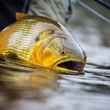





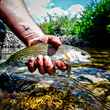



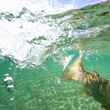
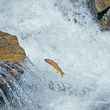




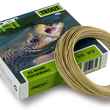



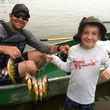
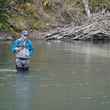



Comments
Michael Bernhard replied on Permalink
Wry stuff from beginning to end . Well served
Pages